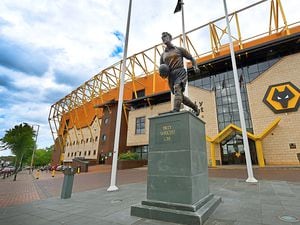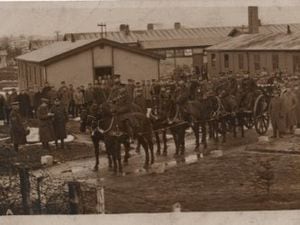Magical memories as Wolves lit up the night
Recently having turned 80, Derek Sturch lives in Devon these days. But he has golden memories of his childhood. Or rather, gold and black memories.
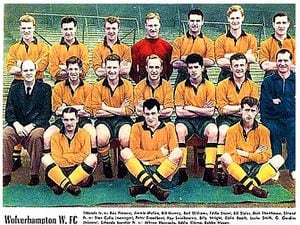
Back then Wolverhampton Wanderers were among the top European football teams.
"In fact, for a while, they were called Champions of the World under the managership of the far-sighted Stan Cullis, and were one of the first British clubs to have floodlights installed in 1953," recalls Derek, who was born on New Year's Day in 1942.
Although he had moved from Wellington to Axminster in 1947, he would regularly return to the Shropshire town to visit his grandparents, the Tudors, who lived at 8 Ercall Gardens, which gave him the opportunity to indulge in the great thrill of a trip to the Molineux.

His introduction to football had not, however, gone well. When Derek was only five or six, his grandfather and uncle took him along to the Bucks Head to watch Wellington Town (later Telford United) play.
"We had to leave the match early because I was so upset by the noise of the crowd shouting and the players 'bumping' into one another," he said.
"Fortunately it didn't take too long before football became my passion, and needless to say, Wolves my team.
"There were always buses leaving Wellington for Molineux on match days. My Uncle Joe would take me with him and there was nothing more exciting than climbing the steps of the coach and joining the buzz of anticipation – and smog of cigarette smoke – that swept through its passengers."
At the ground Uncle Joe chose to stand higher up the terraces to get a better view, but Derek would be carried shoulder high and placed virtually on the pitch with other young supporters.
"I could see everything and also hear a few choice words, particularly after an opponent had felt the effect of a strong tackle from Eddie Clamp, the original 'chopper.'"
It was a team of legends, and goalkeeper Bert "the Cat" Williams, centre half Billy Wright, left half Ron Flowers, and inside left Peter Broadbent were all his heroes, and all within touching distance.
Two games in particular stand out in his memory. The first game Derek saw under floodlights was when Wolves took on the Russian champions Spartak Moscow on November 16, 1954. Molineux was packed and buzzing.
Wolves left things late, overwhelming Spartak with four late goals.
"The crowd went absolutely wild."
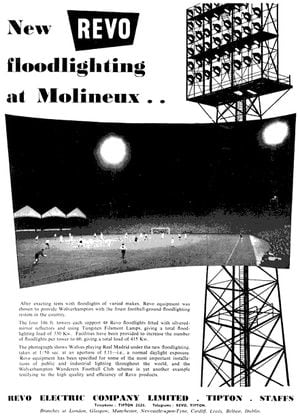
And then, only a few weeks later, the opponents on December 13 were Hungarian four-times champions Honved, including the irrepressible centre forward Puskas.
The atmosphere on the coach from Wellington was electric.
"I can remember the man next to my uncle saying 'We'll be lucky to get a draw' and my uncle replying 'We'll win, Swinbourne will see to that,' which turned out to be prophetic.
"It was again a capacity crowd under those magical floodlights and I was, as usual, close to the pitch."
Honved quickly went into a two-goal lead but the heavy pitch started to blunt the visitors' neat passing game, and Wolves pulled one back with a Johnny Hancocks penalty.
"In the final 15 minutes Roy Swinbourne majestically rose to head home the equaliser before, a few minutes later, firing home a shot from outside the area which proved to be the winner. I can't describe the elation. The shouting, the cheering, the clapping, was deafening."
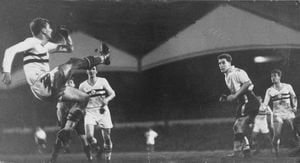
On the death of his gran in 1956, Derek's visits to Wellington – and so to Molineux – became less frequent, until his last of all, in 1978, for an FA Cup replay against Exeter.
"The Grecians lost 3-1, but the atmosphere and crowd were very different to that I remembered as I stood beside the pitch 20-odd years before. What memories. What a team they were. It's great to see them once again gaining the dominance they once had, those wonderful Wolves."
As to his background, Derek, from Honiton, says: "I was born on January 1, 1942, at the Wrekin Hospital only a short walk away from where we were living with my mother's parents Bill Tudor and his wife at 8 Ercall Gardens, Wellington.
"My mother worked part time as a housemaid for Dr Woodfine and his wife, who had a large house off the Holyhead Road. My mother married William Joseph Sturch just before World War Two broke out. I know very little about him. The marriage unfortunately broke down and my mother and myself continued living at Ercall Gardens.
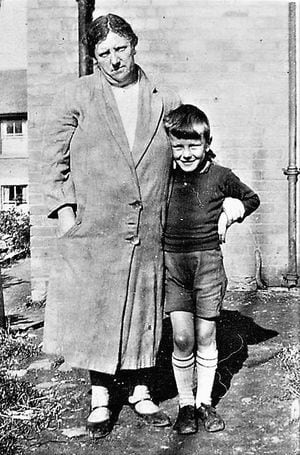
"I started school at Wrekin Road in 1946 but was only there for a few months before we left for Devon where my mother married Jack Spiller whom she had met when he was serving at the Donnington Barracks.
"We moved into a Nissen hut on the recently-vacated 315th American Army Hospital at Millwey Rise, Axminster, which in the early days was derogatorily called 'the Camp,' as 'squatters' together with many other wartime families looking for somewhere to live during times of severe hardship.
"I returned to Wellington at every opportunity during school holidays."
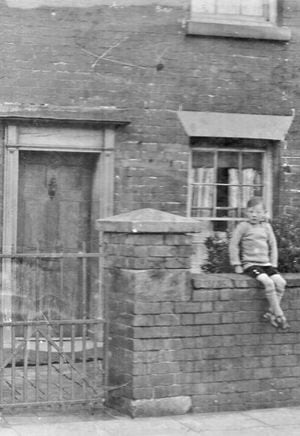
Apart from the wonderful Wolves, these were great days for British middle and long distance running. although for Derek it is the exploits of the Czech Emil Zatopek which remain embedded in the memory from the 1952 Helsinki Olympics.
"I can still see Mick Lucas, who lived next door, and myself racing round the 'track' at Ercall Gardens when I went back to Shropshire during the holidays. It was a ring road with houses on either side, which to us were the stands holding the cheering crowds while we attempted to set new records as 10-year-olds.
"We were the first to break the four-minute barrier for the mile, while an attempt to beat the marathon record only fell short when we were called in for lunch. We had calculated each lap of the 'track' to be about 440 yards, a quarter of a mile. A later, more precise measurement found it was actually only 280 yards which rather put paid to all the records we had set."


